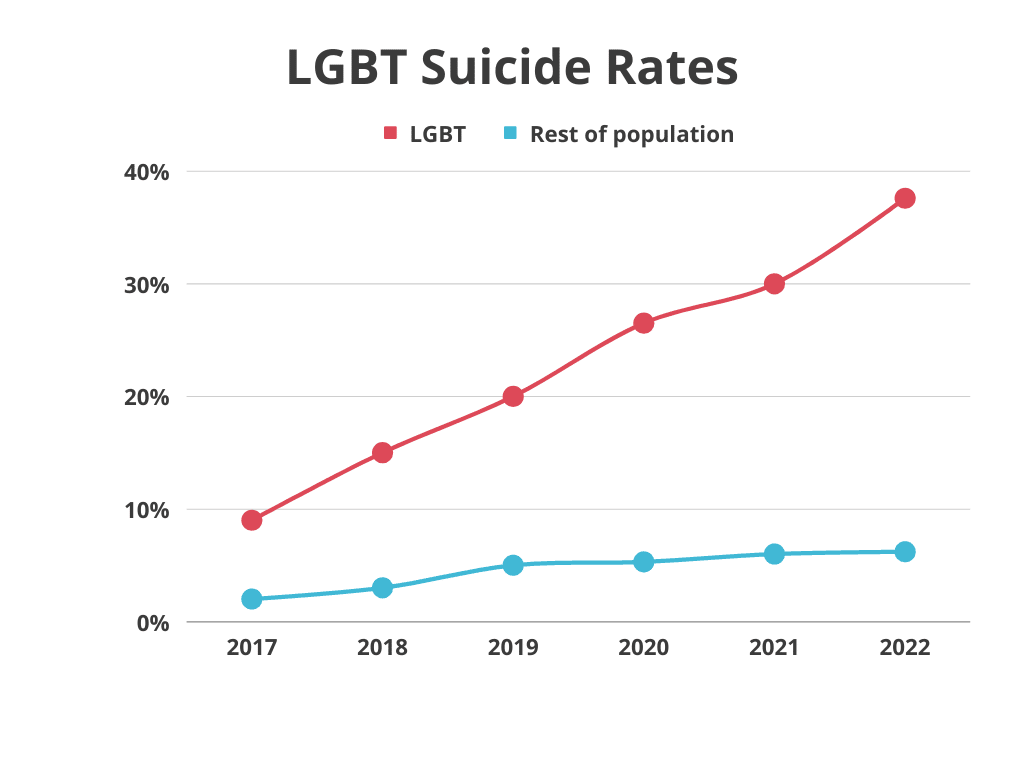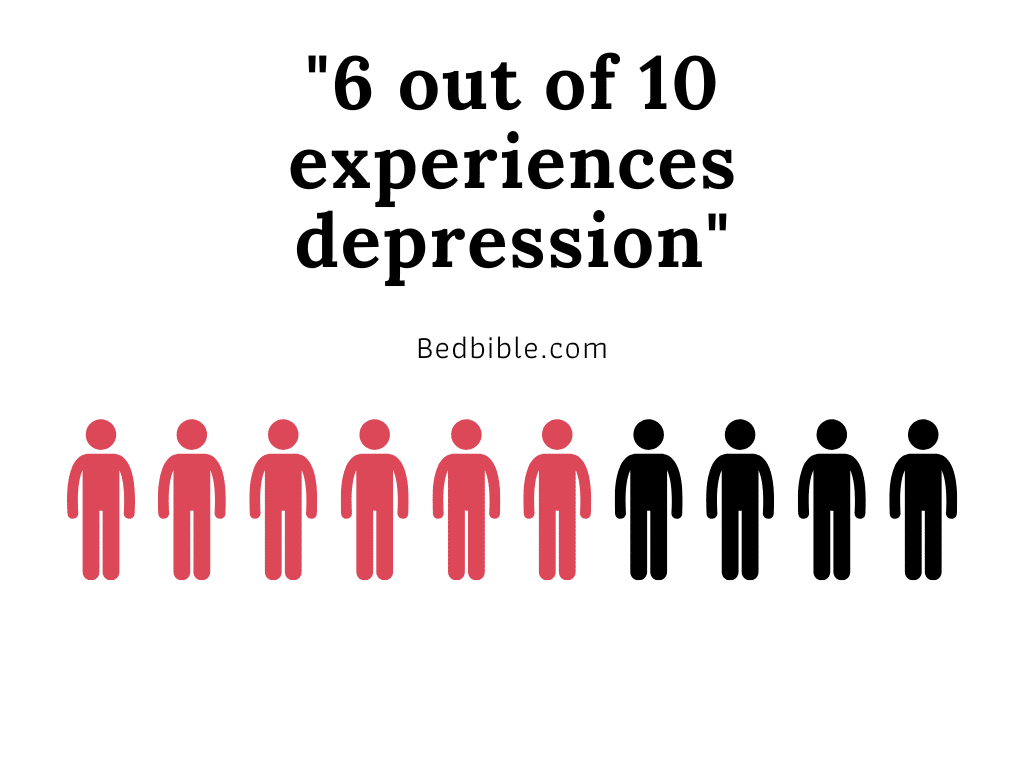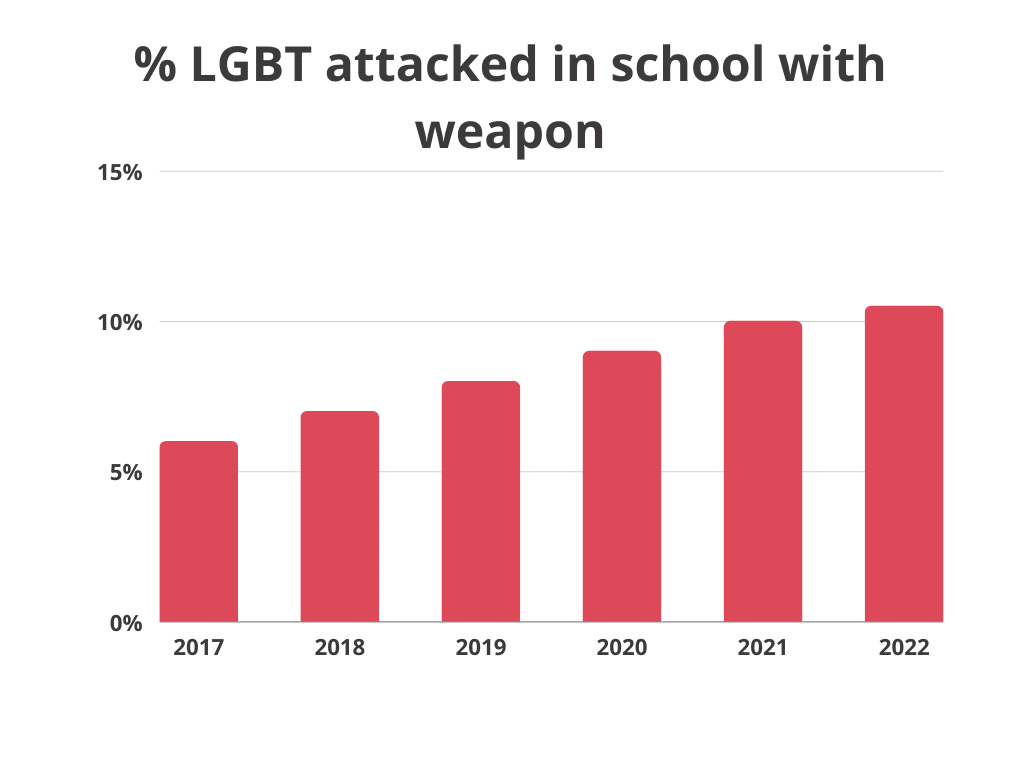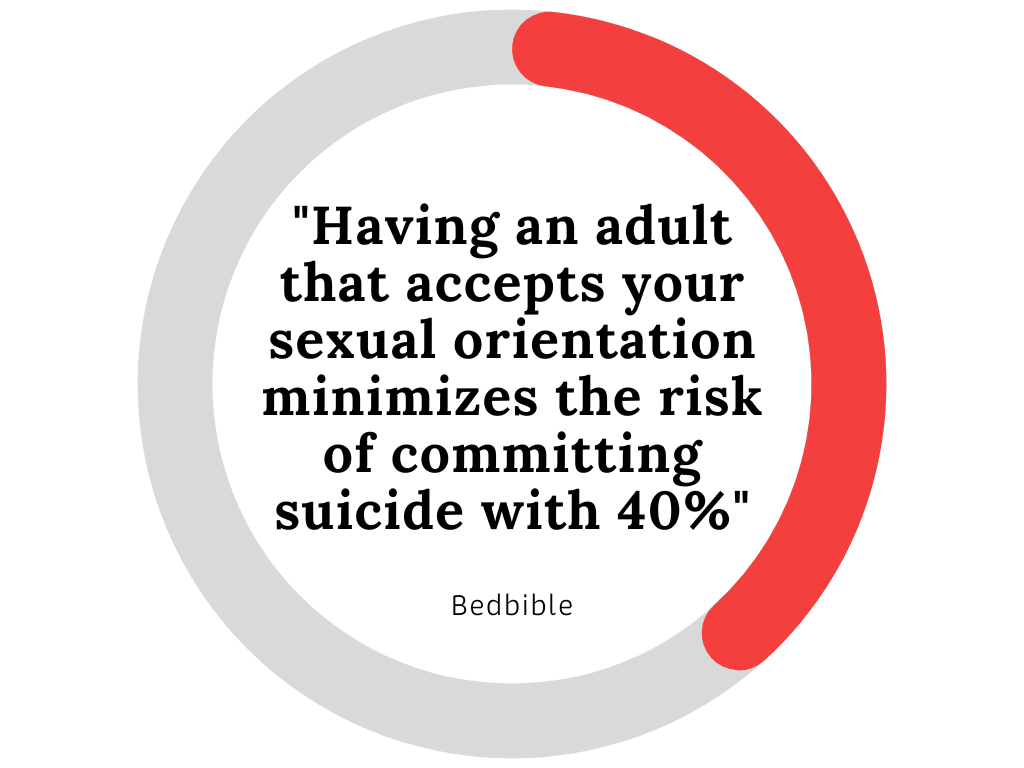![LGBT Suicide Rates [Facts & Statistics]](https://wp.bedbible.com/wp-content/uploads/2023/02/LGBT-Suicide-Rates-Facts-Statistics.png)
Suicide rates among LGBT individuals are significantly higher than those among the general population. Many factors contribute to these high rates of suicide among the LGBT community, including discrimination, rejection, and marginalization. Many LGBT individuals face discrimination and stigmatization from their families, peers, and society as a whole, which can lead to feelings of isolation, hopelessness, and despair.
We have in this report chosen to focus on the LGBT community and its shocking numbers compared to the general public.
Overview
- LGBT persons are 4-5x more likely to have attempted suicide compared to their peers. However, LGBT does not have more completed suicides than the rest of the population
- 70% of suicide attempts happen in the first 5 years of recognizing yourself as LGBT
- Every 50 seconds one person from the LGBT community attempts suicide
- 27% of bisexuals attempt suicide, 19% of gays or lesbians attempt suicide, and only 6% of straight attempt suicide
- Suicide is the second leading cause of death among young people aged 10-24 in the United States
- Around 3.5 million LGBT persons seriously think of committing suicide pr. year. (2.1 million of them are 13-24 years old)
- 21% of LGBT of color compared to 12% of LGBT white attempts suicide
- 50% of LGBT teens (13 – 17 years old) seriously consider attempting suicide every year. 18% of them did try to commit suicide. Which is double as many as “normal” teens in the US (9%).

Depression
- 6 out of 10 LGBT experience depression
- LGBT persons diagnosed with depression are 8 times more likely to commit suicide compared to LGBT persons with no depression
- Schools that offer social activities reduce the risk of depression and suicide for LGBT youths

Bullying and violence
- 4 out of 10 LGBT youth said they have been bullied. Those who got bullied have 3 times as high a probability of committing suicide the next year.
- 10% got attacked in the school with a weapon (scissors, bottle, keys, etc.)
- 2 out of 10 have experienced rape
- 150% is the number that LGBT students are more likely to drop out of education compared to similar students the same age

Acceptance & Care
- If you have one adult that accepts your sexual orientation you reduce the risk of committing suicide by 40%
- 85% of LGBT adolescents (13 – 24 years old) were looking for mental healthcare last year.
- Parent for LGBT youth: Communicate more with them and Respect their decision

Similar reports on same subject
If you’re interested in more stats on this topic. These might be interesting for you:
